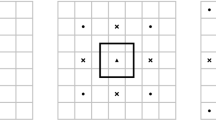Abstract
During the last few years, unsteady and aeroelastic simulations have become a standard part of CFD computations in aeronautical applications. They are usually used with various types of turbulent models the most of which are derived from system of the Reynolds-Averaged Navier–Stokes equations (RANS). However, the RANS system itself is derived using time-averaging and hence it neglects certain type of unsteadiness in its own nature. Therefore it is necessary to investigate what is the ability of the contemporary numerical methods (i.e. combinations of numerical schemes and turbulence models) to simulate various types of unsteady flows. The authors carried out a series of numerical tests of two types of unsteady flows in external aerodynamics. Namely the transonic compressible flow over harmonically oscillating NACA 0012 aerofoil and subsonic compressible flow over the same aerofoil with oscillations induced by the flow itself (i.e. considering the aeroelastic interaction). Three different high-order finite volume schemes with various contemporary turbulence models were chosen for the testing. In the first researched case the computations were carried out using: the Modified Causon’s scheme “as reported by Furmánek and Kozel (Kybernetika 45(4):567–579, 2009)” (derived from TVD form of the classical MacCormack scheme) and the solver edge developed by the Swedish defence and research agency FOI (n-stage Runge–Kutta scheme, central differences with Jameson’s artificial dissipation, geometric multigrid, implicit residual smoothing). The tested models of turbulence were: the one-equation Spalart–Allmaras model, the two-equation Kok’s TNT model and the EARSM model. Unfortunately, none of these models produced results able to serve as a reliable numerical simulation of the first researched case. The main cause is probably the interaction between the turbulent boundary layer and shock-wave formed on the top side of the aerofoil. For the purpose of further investigation the Modified Causon’s scheme was adapted for modelling aeroelastic interaction between aerofoil and flow with one degree of freedom. Results of this simulation correspond better to the real flow, but it is necessary to carry out another tests to find out what is the exact cause of the observed problems.











Similar content being viewed by others
References
Advisory Group for Aerospace Research and Development Neuilly-Sur-Seine (France) (2000) Data from AGARD report 702. Defence Technical Information Center. http://books.google.de/books?id=8hyCOAAACAAJ
Causon DM (1989) High resolution finite volume schemes and computational aerodynamics. In: Ballmann J, Jeltsch R (eds) Nonlinear hyperbolic equations—theory, computation methods and applications, notes on numerical fluid mechanics, vol 24. Vieweg, Braunschweig, pp 63–74
Čečrdle J, Maleček J (2002) Verification FEM model of an aircraft construction with two and three degrees of freedom. In: Technical report R-3418/02, aeronautical research and test establishment, Prague, (in Czech)
Chen HC, Patel VC, Ju S (1990) Solutions of Reynolds-averaged Navier–Stokes equations for three-dimensional incompressible flows. J Comput Phys 88(2):305–336
Donea J (1982) An arbitrary Lagrangian-Eulerian finite element method for transient fluid-structure interactions. Comput Method Appl Mech Eng 33:689–723
Feistauer M, Felcman J, Straškraba I (2003) Mathematical and computational methods for compressible flow. numerical mathematics and scientific computation. Oxford University Press, New York. ISBN 0-19-850588-4
Franke M, Wallin S, Thiele F (2005) Assessment of explicit algebraic reynolds-stress turbulence models in aerodynamics computations. Aerospace Science and Technology (9)
Furmánek P, Kozel K (2009) High order finite volume schemes for numerical solution of 2D and 3D transonic flows. Kybernetika 45(4):567–579. ISSN 0023–5954
Furmánek P, Fürst J, Holman J, Kozel K (2011) Comparison of various turbulence models for steady and unsteady flow. In: Topical problems of fluid mechanics 2011. Institute of Thermomechanics, Prague, AS CR, v.v.i., pp 45–48. ISBN 978-80-87012-32-1
Fürst J, Furmánek P (2011) An implicit macCormack scheme for unsteady flow calculations. Comput fluids 46(1):231–236. ISSN 0045–793
Harten A (1983) High resolution schemes for hyperbolic conservation laws. J Comput Phys 49:357–393
Jameson A (1993) Artificial diffusion, upwind biasing, limiters and their effect on accuracy and multigrid convergence in transonic and hypersonic flow. AIAA paper 93–3359, AIAA 11th Computational Fluid Dynamics Conference, Orlando, Florida
Jameson A (1995) Analysis and design of numerical schemes for gas dynamics 1, artificial diffusion, upwind biasing, limiters and their effect on accuracy and multigrid convergence, RIACS technical report 94.15. Int J Comput Fluid Dyn 4:171–218
Kok JC (2000) Resolving the dependence on free-stream values for \(k-\omega \) turbulence model. AIAA J 38(7):1292–1294
Lesoinne M, Farhat C (1996) Geometric conservation laws for flow problems with moving boundaries and deformable meshes, and their impact on aeroelastic computations. Comput Method Appl Mech Eng 134:71–90
Spalart PR, Allmaras SR (1992) A one-equation turbulence model for aerodynamic flows AIAA Paper, pp 92–0439
Sváček P (2011) Numerical modelling of aeroelastic behaviour of an airfoil in viscous incompressible flow. Appl Math Comput 217(11):5078–5086. ISSN 0096–3003
Titarev VA, Toro EF (2004) Finite-volume WENO schemes for three-dimensional conservation laws. J Comput Phys 1:238–260
Acknowledgments
This work was partly supported by the grant GACR P101/11/0207.
Author information
Authors and Affiliations
Corresponding author
Rights and permissions
About this article
Cite this article
Furmánek, P., Kozel, K. Deterministic unsteady and aeroelastic flow simulations with high-order FVM schemes. Computing 95 (Suppl 1), 145–161 (2013). https://doi.org/10.1007/s00607-013-0291-7
Received:
Accepted:
Published:
Issue Date:
DOI: https://doi.org/10.1007/s00607-013-0291-7




